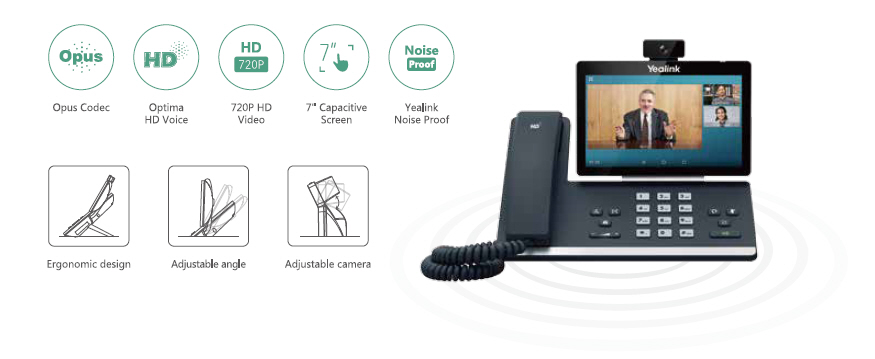Introduction
In today’s fast-paced business environment, communication is the lifeblood of any organization. As companies expand their operations globally, the need for efficient and effective communication systems grows exponentially. One technology that has revolutionized how businesses communicate is the VoIP phone system. By integrating Session Initiation Protocol (SIP) with VoIP phone systems, organizations can enhance their communication capabilities while also confronting various compliance challenges. In this article, we will delve deep into navigating compliance challenges with a SIP-integrated VoIP phone system, examining both its advantages and potential pitfalls.
Understanding VoIP Phone Systems
What is VoIP?
Voice over Internet Protocol (VoIP) refers to a technology that allows voice communications to be transmitted over the internet instead of traditional phone lines. This method not only reduces costs but also enhances flexibility in communication.
How Does VoIP Work?
VoIP converts voice signals into digital data packets which are then transmitted over the internet. The process involves several key components:
- Analog-to-Digital Conversion: Voice signals are digitized. Data Transmission: Packets travel through the internet. Digital-to-Analog Conversion: At the receiving end, packets are converted back to voice signals.
Benefits of VoIP Phone Systems
Cost Efficiency: Significant reductions in communication costs. Scalability: Easily expandable as business needs grow. Advanced Features: Access to features like voicemail-to-email, call forwarding, and video conferencing.SIP: The Backbone of Modern Communication
What is SIP?
Session Initiation Protocol (SIP) is a signaling protocol used for initiating, maintaining, and terminating real-time sessions that involve video, voice, messaging, and other communications applications.
The Role of SIP in VoIP Systems
SIP plays a crucial role in connecting different endpoints within a VoIP framework:
- It establishes connections between callers. Manages session parameters. Facilitates the teardown of calls once completed.
Advantages of SIP Integration
Interoperability: Allows various systems to work seamlessly together. Improved Call Quality: Enhanced transmission techniques result in clearer calls. Feature-Rich Functionality: Supports advanced features like presence information and instant messaging.Navigating Compliance Challenges with a SIP-Integrated VoIP Phone System
Compliance challenges arise from various regulations governing data privacy and security across multiple industries. Navigating these challenges requires an understanding of relevant laws and how they affect your communications strategy.
Key Regulatory Frameworks Impacting Compliance
Health Insurance Portability and Accountability Act (HIPAA): Governs patient information confidentiality in healthcare settings. General Data Protection Regulation (GDPR): Enforces strict rules on data protection for individuals within the EU. Federal Communications Commission (FCC) Regulations: Guidelines related to telecommunications services in the U.S.Challenges Faced by Businesses
Organizations using SIP-integrated VoIP systems may face numerous compliance-related issues:

- Ensuring data encryption while transmitting sensitive information. Keeping records for auditing purposes as mandated by regulations. Managing user access controls effectively to prevent unauthorized access.
Strategies for Overcoming Compliance Challenges
Implement robust security measures including end-to-end encryption. Regularly review and update policies to align with changing regulations. Conduct training sessions for employees on compliance best practices.Security Concerns with SIP-Based VoIP
Common Security Risks
While SIP-integrated VoIP systems offer numerous benefits, they are not immune to security concerns:
Eavesdropping Denial of Service Attacks Caller ID SpoofingStrategies for Enhancing Security
To mitigate risks associated with these vulnerabilities:
Utilize secure protocols such as Transport Layer Security (TLS). Employ firewalls specifically designed for VoIP traffic management. Regularly update software to patch known vulnerabilities.FAQ Section
1. What are the primary benefits of using a SIP-integrated VoIP phone system?
Answer: The primary benefits include cost savings, enhanced features such as video calling and instant messaging, scalability for growing businesses, and improved call quality due to advanced transmission techniques.
2. How does compliance impact my business's use of a SIP-integrated VoIP system?
Answer: Compliance ensures that your business adheres to regulations regarding data privacy and security which can impact how you manage your communications infrastructure.
3. Are there specific industries that need to pay more attention to compliance when using VoIP?
Answer: Yes, industries such as healthcare (HIPAA), finance (Gramm-Leach-Bliley Act), and education (FERPA) need stringent compliance measures due to regulatory requirements surrounding sensitive information.
4. Can I integrate my existing telephony infrastructure with a new SIP-based system?
Answer: Yes, many SIP solutions offer compatibility with existing telephony systems through adapters or gateways allowing for seamless integration without complete replacement.
5. What should I do if my business experiences a data breach involving my VoIP system?
Answer: Immediately report the incident, conduct an internal investigation to understand what occurred, notify affected parties if necessary under applicable laws, and implement enhanced security measures moving forward.
6. Is it possible to ensure secure communications over a public network using SIP?
Answer: While there are inherent risks when using public networks, implementing strong encryption methods such as Secure Real-time Transport Protocol (SRTP) can help protect sensitive communications significantly.
Conclusion
Navigating compliance challenges with a SIP-integrated VoIP phone system requires diligence and strategic planning but offers considerable rewards in enhancing communication efficiency while http://rafaelwlhg414.fotosdefrases.com/how-customizable-features-make-voip-phones-ideal-for-any-industry meeting regulatory obligations head-on. By staying informed about evolving regulations and constantly improving security measures within your telecommunication framework, businesses can effectively harness the power of modern communication technologies while safeguarding sensitive information—ultimately leading them towards sustainable growth in today's competitive landscape.

This comprehensive exploration serves as an essential guide for organizations looking to embrace modern communication technology while ensuring adherence to regulatory standards—a critical balance that defines successful business operations today!